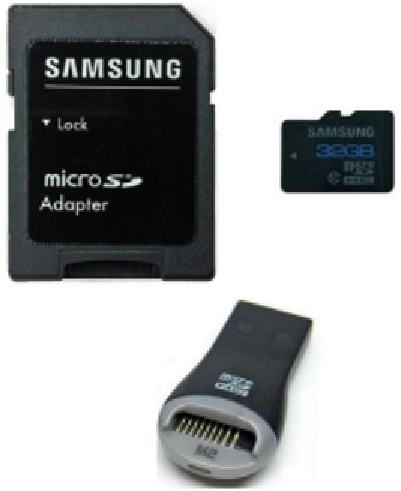Hardware Reference
In-Depth Information
Figure 12-3:
SD cards, micro-SD cards, and SD-card readers
Capacity
SD cards have gone through numerous changes to their specii cation since their
release in 1999. The original SD specii cation allowed cards with capacities up
to 2 gigabytes. When the 2 gigabyte barrier became a problem, SD-HC was
introduced. Short for SD High Capacity, it specii ed a way of storing up to 32
gigabytes of data. It does not simply integrate more space; the protocol had to be
changed to allow for higher capacity. Again, the size barrier became a problem,
and SD-XC (for eXtended Capacity) was born. The standard insists that newer
formats accept older cards, but the opposite is not true; some SD-compatible
devices will not accept SD-HC cards, even if they can i t physically.
The card capacity is only one factor. To use a card's capacity, the system nor-
mally needs to use a i lesystem. A
i lesystem
is a way of preparing the space on
a physical storage medium (SD-card, l oppy, or hard drive) to allow i les and
folders to be stored in a hierarchal way. SD cards can be used to transfer data
between devices and operating systems with different specii cations. From this
variety of formats, FAT has emerged as the most common i lesystem.































Search WWH ::

Custom Search